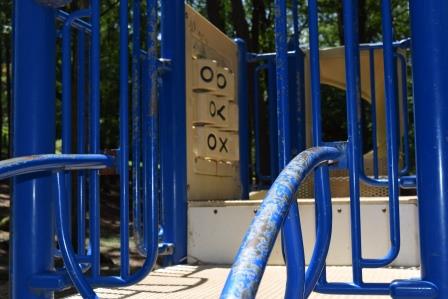 A University of Alabama at Birmingham study, conducted by students in the Department of Occupational Therapy, investigating the quality of park play spaces between affluent and non-affluent communities has been published by the International Journal of Environmental Research and Public Health. The study, titled “Disparities in Quality of Park Play Spaces between Two Cities with Diverse Income and Race/Ethnicity Composition: A Pilot Study,” found “significant disparity in Play Value in parks” between the two communities.
A University of Alabama at Birmingham study, conducted by students in the Department of Occupational Therapy, investigating the quality of park play spaces between affluent and non-affluent communities has been published by the International Journal of Environmental Research and Public Health. The study, titled “Disparities in Quality of Park Play Spaces between Two Cities with Diverse Income and Race/Ethnicity Composition: A Pilot Study,” found “significant disparity in Play Value in parks” between the two communities.“The children that were actively using the Mountain Brook play spaces appeared to have all needs available such as clean restrooms, accessibility to play structures and spaces and cleared walking surfaces,” said Amy Maher, OTS. “There was also a noticeable sense of safety as police or maintenance was present while the children engaged with other children in their play environments.”
Maher, along with fellow students Emily Rose, Kristina C. Gregory and Megan Cotton, studied six parks in Mountain Brook, Alabama and five parks in Irondale, Alabama. According to the most recent United States Census Bureau American Community Survey (ACS), the median annual income for Mountain Brook ($131,281) is more than double that of Irondale ($50,157) which is below the U.S. average.
The students, paired in teams of two, conducted independent evaluations of each play park using the Playable Space Quality Assessment Tool (PSQAT). The PSQAT provides scores based on location, play value and care and maintenance. Mountain Brook’s median scores were nearly 50 percent higher in play value (61.00 vs. 43.50) and care and maintenance (76.43 vs. 53.57) and almost double Irondale’s location score (82.14 vs. 47.14).
 “Children learn through play and we need to combat the increasing reduction in children’s outdoor play opportunities,” said Gavin Jenkins, Ph.D., OTR/L, assistant professor in the Department of Occupational Therapy. “Understanding the quality of play environments will help communities to ensure that all children have access to imaginative, stimulating play environments.”
“Children learn through play and we need to combat the increasing reduction in children’s outdoor play opportunities,” said Gavin Jenkins, Ph.D., OTR/L, assistant professor in the Department of Occupational Therapy. “Understanding the quality of play environments will help communities to ensure that all children have access to imaginative, stimulating play environments.”The students’ research was part of their final research project supported by their “Occupations of Infants, Children & Adolescents” class in the Master of Science in Occupational Therapy program. As part of the program the students learn the importance of play, stages of play, function of play and more for their careers as OTs. In the conclusion of this study, the students noted that their research provided them “a further window into the challenges of providing suitable play environments and opportunities for children and young people who live on low income neighborhoods….”
“Studies like this could be used to help communities determine how well they are doing, but perhaps more importantly help them to prioritize the improvements needed to their sites,” said Jenkins.
“I would encourage families in the city of Irondale to contact city officials to make needed improvements to enhance accessibility and provide police presence or maintenance people during the hours the play spaces are open,” said Maher. “Updates would encourage families to use the play spaces and that in turn would give children more access to active play which is central to child development in their social, emotional, cognitive and physical well-being.”

